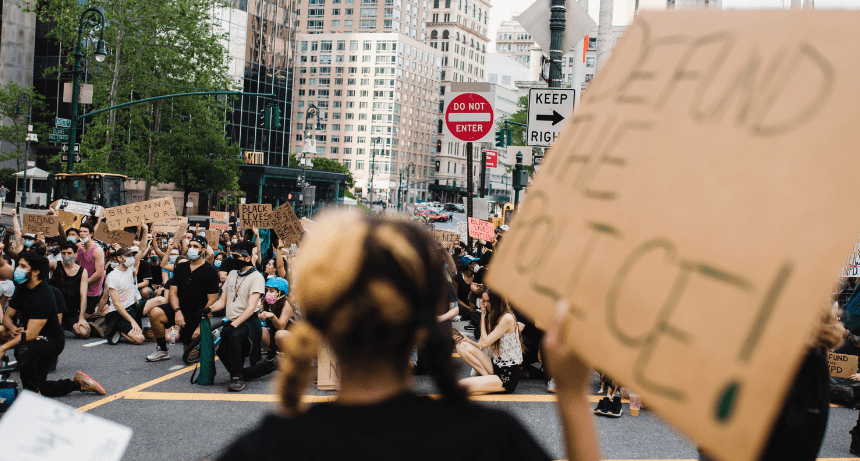
By Gwyneth K. Shaw
The video is seared into our national memory: As the life drained out of George Floyd, police officer Derek Chauvin appears to be a study in nonchalance, putting his sunglasses on his head and his hands in his pockets, occasionally looking straight into the lens.
Now that Chauvin has been fired and convicted of murder and manslaughter — and as the country waits on the legal system to deal with other officers who have taken Black and brown lives — there is renewed pressure for fundamental reform. On Monday, Berkeley Law Dean Erwin Chemerinsky brought two national experts on the topic, Los Angeles County District Attorney George Gascón and civil rights lawyer Connie Rice, for a discussion about what needs to change and how to make it happen.
“The jury did its job, and now America needs to do its job,” said Gascón, a former San Francisco D.A. who also served as police chief there and in Mesa, Arizona. “I no longer believe that this is about reforming policing. I think, quite frankly, the criminal legal system is doing exactly what it was designed to do.”
He and Rice said the job goes well beyond just changing the rules for officers to use deadly force, although that is important as well. It’s about switching the role of police from enforcement to safety — the scope falls well outside the police department.
Quoting from the McCone Commission’s report, which examined the root causes of the 1965 Watts riots in Los Angeles, Rice said the “spiral of despair” caused by poverty persists today. Scrapping what she calls “search and destroy mass incarceration enforcement” is only one step in ending the cycle.
A 180-degree flip to reform the relationship between police and the communities they serve would create a kind of policing that isn’t even recognizable as policing, she said.
“What you get is a holistic safety strategy. Not enforcement, safety.”
That takes social workers, mental health professionals, helpers from within the community, and police all working together, Rice noted. It starts with ending the “warrior mindset” of police and creating an environment where an arrest is seen as a failure, not a way to get promoted.
A new policing template
Rice cited promising results from a pilot program she co-founded with a former police chief in Los Angeles, which began in 2011. Police make arrests for violence, but spend most of their time working within the communities they serve.
The relationship looks more like the “concierge safety” residents in wealthier city and suburban neighborhoods have come to expect.
“People in neighborhoods like mine think that our safety is dependent on the core containment of poor areas,” Rice said. “It’s a toxic contract … People in these (poor) neighborhoods have never had safety: They get violence from the gangs, violence from the conditions, and they get violence from the police.”
Gascón, who changed some of the D.A.’s office policies when he took over, including not prosecuting minors as adults, said reimagining community safety means pulling police away from the center of the story. Public health should be the driver, he said.
“When we need a health professional to address a mental health crisis, that should never be someone with a badge and gun,” he said. “I think we have to move away from the belief that the solutions to these problems are police- and prosecution-based.”
Both speakers agreed that it will be difficult to get individual cops to change without pressure from the top. But the biggest challenge is budgetary and political, because genuine change requires an investment in underserved communities that has been postponed for decades. Again and again, Rice returned to the McCone Commission’s report, which called for improving schools, affordable housing, and general economic conditions.
She said even just addressing the poorer pockets of eastern Los Angeles would cost the county government $15 to $20 billion, and that such funding doesn’t come from a police budget but requires reordering spending at the federal level.
But the time has come, Rice argued, to make those investments. It’s imperative that the “full metal jacket of impunity” Chauvin wore so insouciantly be replaced once and for all. Without real reform, a kinder, gentler version of the mass incarceration system might emerge, “but I don’t think that’s what people were marching for.”
“People have never asked me to get rid of police — they’ve asked me to get police to see them with empathy and compassion,” Rice said. “You have to reposition the police and the community to do something radically different.”